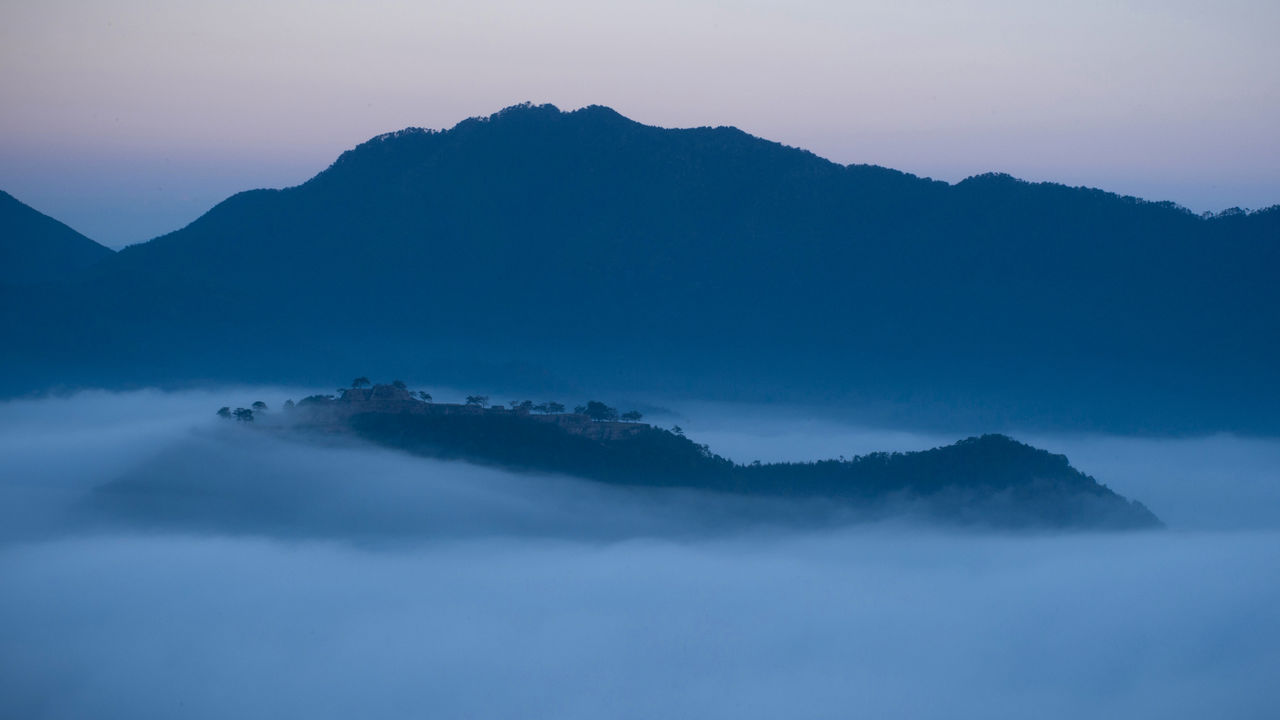
Japan’s Fortress in the Clouds: The Takeda Castle Ruins
Guideto Japan
Travel- English
- 日本語
- 简体字
- 繁體字
- Français
- Español
- العربية
- Русский
A Real-Life Laputa
The ruins of Takeda Castle hover above the town of Asago in the mountains of Hyōgo Prefecture like a scene from a medieval fairytale. The otherworldly impression is heightened during the autumn and early winter, when fog fills the surrounding valley, making it appear as if the ruins of the feudal keep are floating on a river of mist. The early morning phenomenon creates an enchanting scene and has given the ancient site its nickname, “the castle in the clouds.”
The castle and its captivating bed of clouds remained a relatively obscure tourist attraction until the first decade of this century, when the Japan Castle Foundation included it in its list of the country’s 100 finest castles. The ruins have since starred in commercials, including one for Google Japan, and were used as a filming location for NHK’s 2014 Taiga drama—the national broadcaster’s annual period piece. That year Takeda saw a record 580,000 visitors come to view the castle remains. The uptick in attention has attracted tourists and history buffs alike, but crowds remain relatively tame and do not detract from the spectacular views.
 The stone foundations of the keep date back more than 400 years.
The stone foundations of the keep date back more than 400 years.
On Cloud Nine
The best time to find Takeda Castle floating on mist is from October to December, when conditions are ripe for producing fog. During this period sunshine warms the waters of the nearby Maruyama River during the day, and then in the early morning hours cold air summons vapor from the heated surface, filling the valley in a thick, white haze. The best conditions are a clear, breezeless morning following a sunny day, with relatively high humidity and a difference of 10°C or more between the day’s low and high temperatures. The phenomenon is short-lived, though, with most of the mist dissipating a few hours after sunrise.
 Takeda Castle floats above the clouds at dawn.
Takeda Castle floats above the clouds at dawn.
 Just after 8:00, the morning sun dispels the last traces of mist.
Just after 8:00, the morning sun dispels the last traces of mist.
A Vital Stronghold
Takeda Castle was constructed in the mid-fifteenth century by the influential military leader Yamana Sōzen (1404–73). A typical mountain fortress, it stood watch over the surrounding province. However, in 1577 the warrior Hashiba Hidenaga conquered the castle in the name of his half-brother, warlord Toyotomi Hideyoshi, as part of a campaign to reunify Japan. Akamatsu Hirohide was appointed lord of the keep, but the castle was abandoned when he committed ritual suicide after aligning with the losing side in the nation-unifying Battle of Sekigahara in 1600.
All that remains of Takeda Castle now are its stone foundation and ramparts, which even after 400 years appear as sturdy as when they were constructed.
 Set low, Takeda Castle has inspired some imaginative admirers to compare it to a crouching tiger.
Set low, Takeda Castle has inspired some imaginative admirers to compare it to a crouching tiger.
A Stonework Wonder
While inhabited, Takeda Castle—at 353 meters above sea level—gave lookouts a commanding, unhindered view of the surrounding mountains and valleys. Although no wooden structures have survived to modern times, the stronghold’s foundations and walls remain intact and are fine examples of stonework from the tumultuous Warring States period (1467–1568). They are formed almost entirely of uncut rock placed with expert precision by highly skilled stonemasons known as anōshū—members of the group are purported to have been able to “hear” where a stone wanted to be laid.
 The castle’s foundation and walls appear as sturdy as when they were built.
The castle’s foundation and walls appear as sturdy as when they were built.
The history and scenery of Takeda Castle make the ruins a joy to visit even when not enveloped in mist. In spring, cherry trees on the grounds and along the Maruyama River bloom in tandem, dying the valley a lovely pink hue. The other seasons are equally charming: summer offers stunning blue skies, fall provides autumn foliage viewing, and winter brings moving snowscapes.
Entry times for the ruins vary seasonally and the grounds are closed for most of January and all of February.
Takeda Castle Visiting Hours
- Spring: March–April, 8 am–6 pm
- Summer: June–August, 6 am–6 pm
- Autumn: September–November, 4 am–5 pm
- Winter: December–January 3, 10 am–2 pm
- Closed: January 4–February
 In springtime, the castle ruins soar in the background as cherry trees bloom along the Maruyama River.
In springtime, the castle ruins soar in the background as cherry trees bloom along the Maruyama River.







